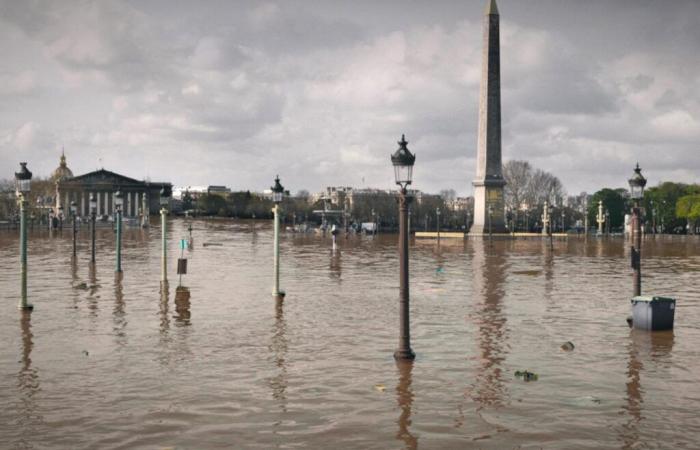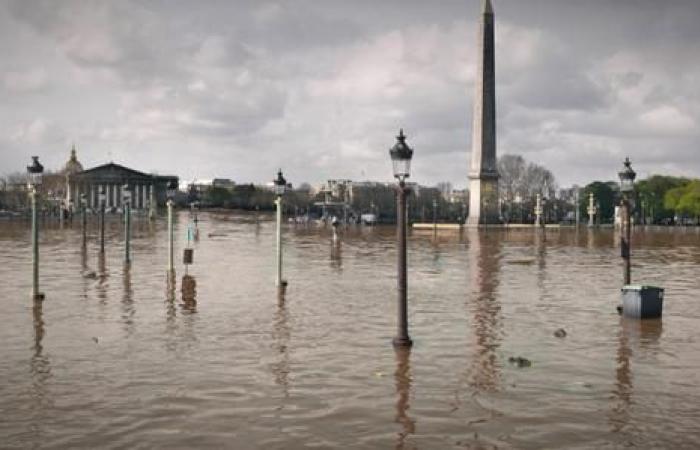France 5 – THURSDAY NOVEMBER 7 AT 9:10 P.M. – DOCUMENTARY
The Place de la Concorde looks like an immense lake, the Eiffel Tower has its feet under water, in the courtyard of the Louvre, only the top of the pyramid is still dry. These images with very realistic special effects look like those from a disaster movie. But these disturbing scenes could well become reality.
The question is not whether the risk of a hundred-year flood of the Seine equal to or greater than that of January 1910 exists, but when it will occur – with global warming only increasing this possibility of a gigantic flood.
Since 1910, public authorities have continued to try to prevent the risks of seeing Paris again in Venetian fashion, with boats and canals in the heart of a submerged city, as filmed archives show. Over the decades, pontoons have been destroyed, arches enlarged, and digging carried out to improve the flow of the river.
Disaster predicted
Technical means and knowledge have certainly progressed. Hundreds of experts and researchers (engineers, hydrogeologists, climatologists, urban planners, etc.) spend their time studying these phenomena, looking for ways to reduce the power of the river, imagining new protections, finding solutions to avoid the predicted catastrophe. .
But the capital has become fragile with its underground infrastructure – metro lines, car parks, installations for gas, electricity, heating, telephone networks, etc. -, which now extend over seven levels. During a 100-year flood, it is estimated that 5 million Ile-de-France residents would experience interruptions to many of these basic services. The first network to fail would be district heating, the last, drinking water.
Anti-flood plans, ParisPluie plan… public authorities and political leaders take this hundred-year risk very seriously. In the metro and the sewers, we are constantly monitoring and improving the protection installations. Knowing that, despite all the measures taken, unpleasant surprises can occur at any time.
During the major flood that occurred from the end of May to the beginning of June 2016 in part of Europe, the Seine reached 6.10 m (admittedly still far from the 8.62 m record of 1910) and heavy damage was caused, notably , Val-de-Marne. More recently, in July 2021, more than 200 deaths were counted in Germany and Belgium following floods linked to global warming. This phenomenon raises fears of extreme floods in the future which would almost make the 1910 flood look like an average flood.
When the Seine overflowsdocumentary by Mathieu Schwartz (Fr., 2022, 90 min). Broadcast as part of the program “Science grand format”, presented by Mathieu Vidard.







